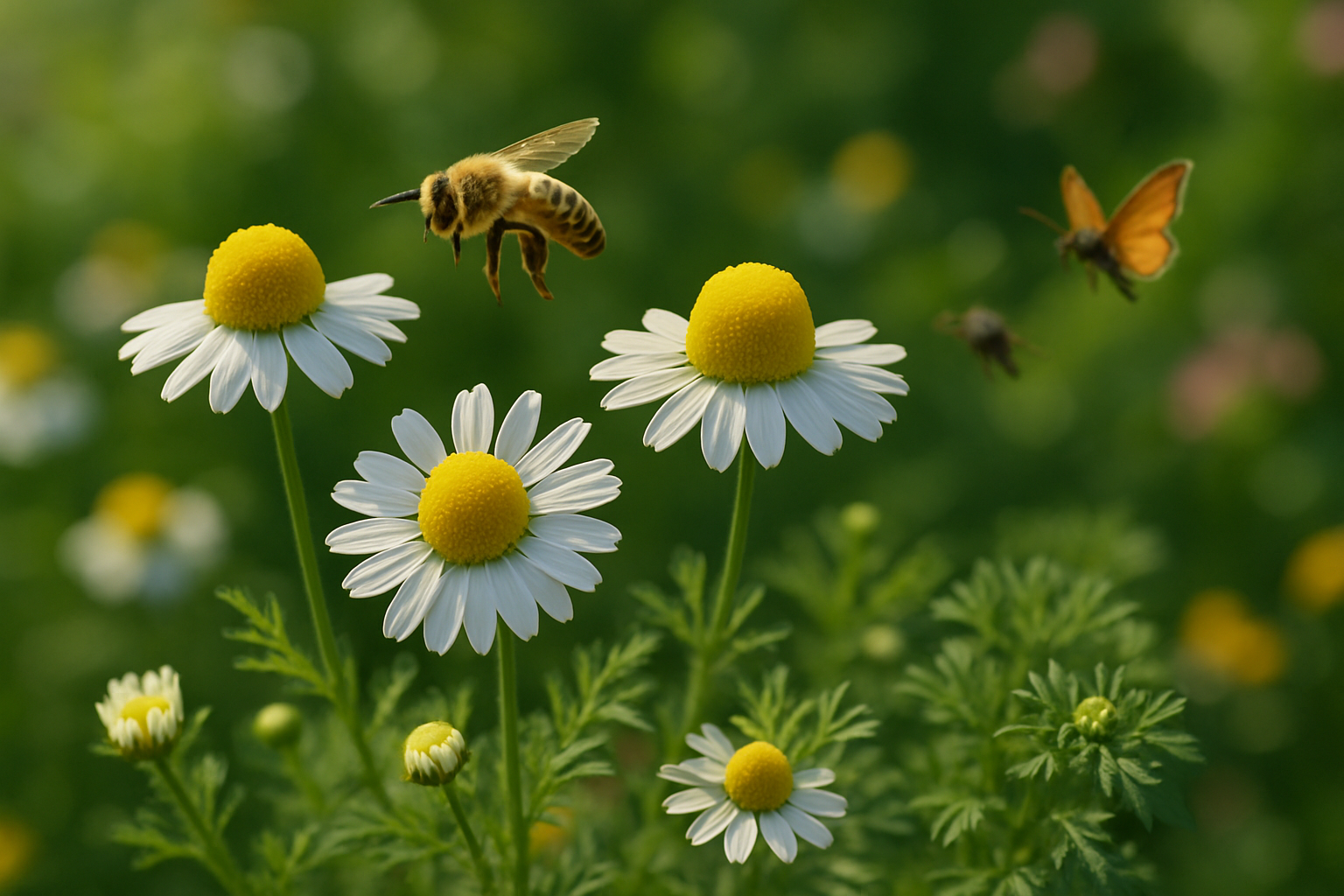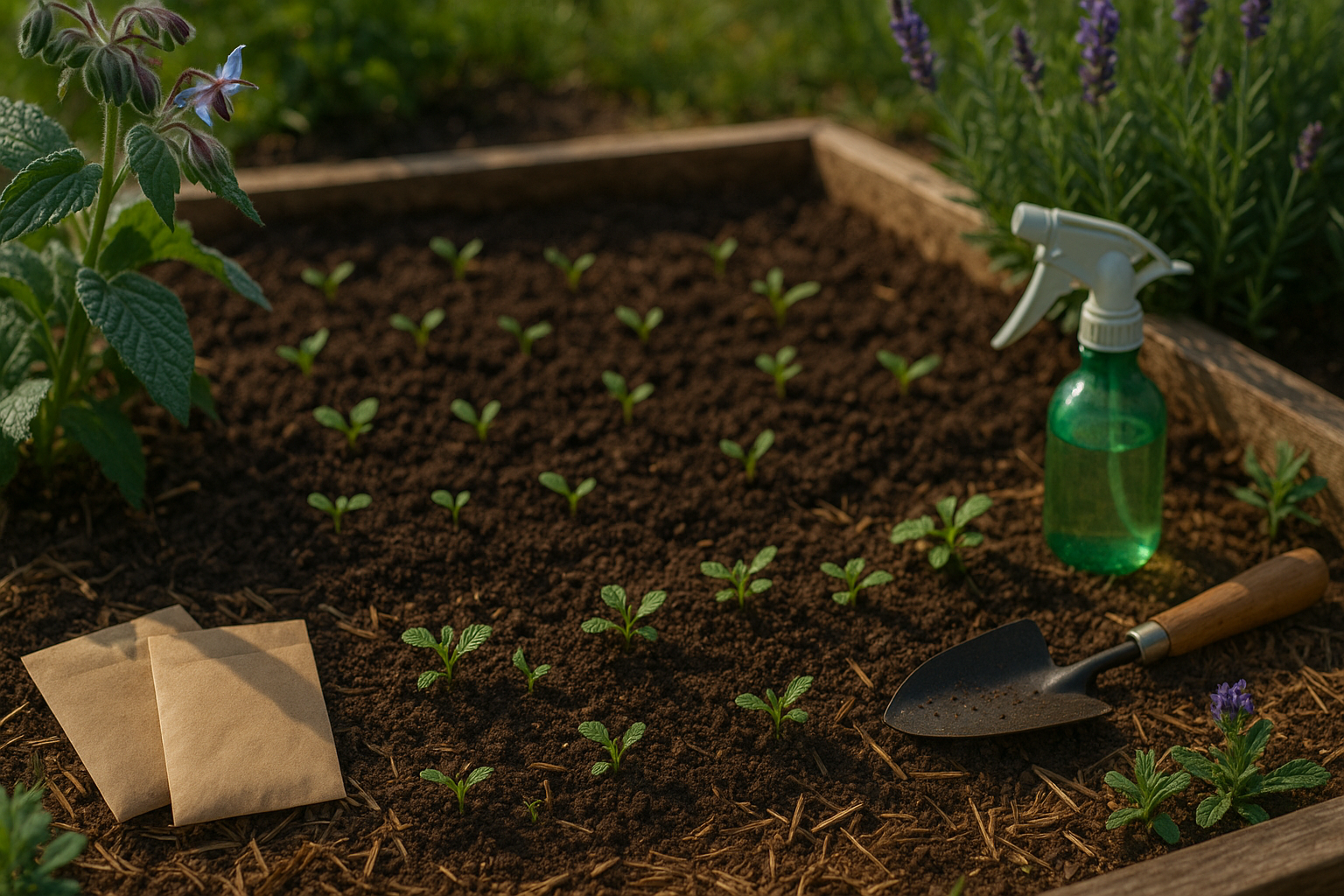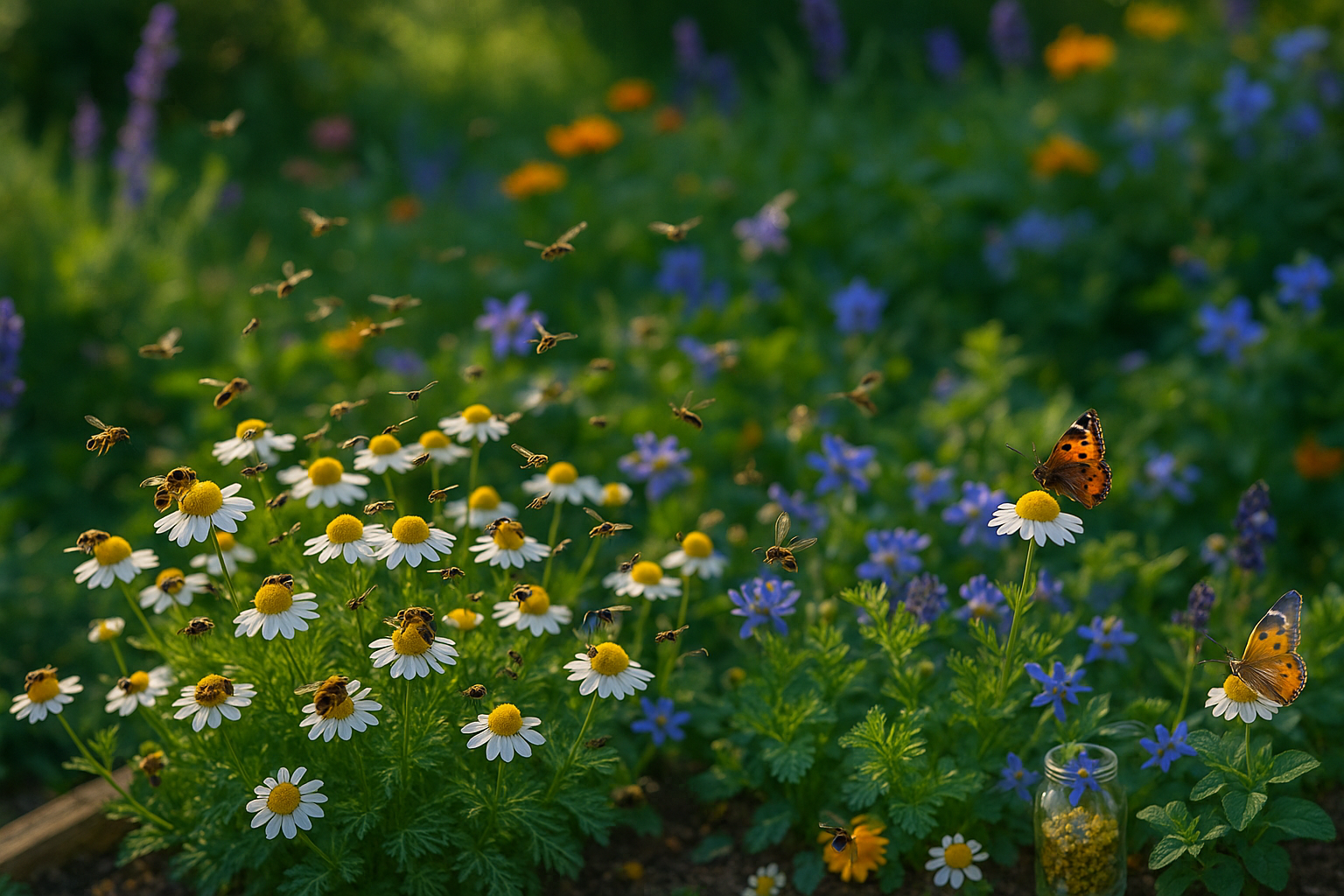Introduction to Chamomile and Pollinators

Growing chamomile for pollinators isn’t just about adding charm to your garden—it’s about playing a vital role in supporting local ecosystems. Chamomile, with its delicate white petals and sunny yellow centers, is loved for more than just its calming properties in tea. This daisy-like herb is easy to grow, thrives in various soils, and requires minimal maintenance, making it a favorite among gardeners of all skill levels. But beyond its beauty and herbal uses, chamomile truly shines as a haven for bees, butterflies, and many beneficial insects.
Pollinators are the unsung heroes of our gardens and agricultural systems. Creatures like bees, butterflies, and hoverflies ensure that fruits, vegetables, and flowers reproduce and flourish. Without them, gardens would lose some of their brightest blooms and much of their bounty. In recent years, however, pollinator populations have declined due to habitat loss and pesticide use, making it more important than ever for gardeners to provide safe havens and nourishing food sources.
That’s where chamomile for pollinators stands out. Its sweetly scented blooms offer accessible nectar and pollen, attracting a steady stream of bees and other beneficial insects throughout the growing season. This not only benefits the pollinators but can also boost the health of your entire garden by supporting a balanced, buzzing ecosystem. Planting chamomile is a simple, natural way to safeguard pollinators and enjoy a more vibrant, resilient outdoor space. Even a small patch of chamomile can make a big impact—one that extends beyond your garden borders.
Best Chamomile Varieties for Pollinators
When choosing chamomile to support pollinators, it helps to understand the differences between the main types: German chamomile (Matricaria chamomilla) and Roman chamomile (Chamaemelum nobile).
German chamomile is an annual with taller, finely branched stems that produce a cloud of small, fragrant white and yellow daisy-like flowers throughout the season. These blooms are rich in nectar and pollen, making them very attractive to bees and beneficial insects, who love the easy-to-access, open disk shape of the flower heads.
Roman chamomile, by contrast, is a perennial with a spreading, low-growing habit and fewer, but often larger, flowers. While Roman chamomile does provide some nectar and pollen, it typically produces less than German chamomile, so bees visit it less frequently.
If your main goal is to attract bees and other pollinators, German chamomile is generally regarded as the superior choice—beekeepers often note increased bee activity around its crowded patches in gardens or fields.
For an extra boost to your pollinator garden, consider adding wild varieties such as Moroccan chamomile (Anthemis mixta) or the pretty double-flowered cultivars of German chamomile like ‘Zloty Lan,’ which still offer pollinator rewards while adding visual interest.
Try planting chamomile in clusters for the best effect, as pollinators are more likely to notice and return to bigger patches. Regardless of variety, avoid using pesticides during bloom, and harvest flowers in stages so your pollinator visitors always have blossoms available.
Pairing chamomiles with other pollinator-friendly herbs like borage, calendula, or lavender will further support a thriving bee-friendly habitat. Chamomile’s easy care, soft scent, and reliable nectar output make it a gentle but powerful ally for boosting pollinator numbers in any sunny garden.
How to Grow Chamomile

Growing chamomile in your garden is as easy as it is rewarding, especially if you want to support pollinators like bees and butterflies. Start by choosing a sunny spot with well-drained soil—a patch that gets at least 6 hours of sunlight daily is ideal.
Sow seeds directly outdoors in early spring, scattering them lightly on the soil surface since chamomile needs light to germinate. Gently press the seeds in and mist with water, keeping the soil consistently moist until tiny seedlings appear in about one to two weeks.
If you’re starting with nursery plants, wait until any danger of frost has passed. Then, space transplants about 8–12 inches apart to give them room to bush out and attract more pollinators.
Chamomile thrives organically, so skip synthetic fertilizers and pesticides—they can harm visiting bees. Instead, enrich your soil with homemade compost or worm castings to provide gentle, steady nutrition.
For pest management, stick to hand-picking or use a quick blast of water for aphids, keeping your garden healthy without chemicals. To extend blooming and provide a longer buffet for pollinators, practice deadheading: snip spent flowers every few days to encourage more buds to form.
Mulch around your plants to keep roots cool and conserve soil moisture, especially during hot spells, which can stress the plants and shorten the blooming window. With a few simple steps and a focus on organic care, your chamomile patch will flourish—and so will the pollinators you’ve invited in.
Supporting Bees and Pollinators in Your Chamomile Patch
Chamomile is a true friend to pollinators like bees, hoverflies, and butterflies, offering open, daisy-like blooms filled with accessible nectar and pollen. These flowers attract a steady stream of helpful insects, especially those looking for an easy meal. By supporting pollinators, your garden becomes healthier overall, benefiting from increased pollination and natural pest control.
To make your chamomile patch even more appealing, provide shallow water dishes with pebbles as safe landing spots—thirsty bees and butterflies will thank you. Consider adding a few stones or small logs nearby to give insects places to rest and seek shelter.
Planting a diverse selection of flowers alongside chamomile can further boost your garden’s appeal. Herbs like lavender, borage, and thyme bloom at similar times and provide extra food sources throughout the season. Sunflowers or marigolds planted along the edges also attract pollinators, creating a vibrant and rewarding space for both insects and gardeners.
By mixing these plants with simple habitat touches, your chamomile bed becomes a buzzing oasis, strengthening the web of life in your backyard.
Chamomile’s Role in a Pollinator-Friendly Ecosystem
Chamomile plays a subtle yet vital role in creating a vibrant, pollinator-friendly ecosystem within any garden. Its delicate, daisy-like blooms attract a range of pollinators, including honeybees, native bees, butterflies, hoverflies, and even certain beetles. By drawing in these helpful insects, chamomile helps ensure the pollination of nearby fruits and vegetables, directly improving yields of crops like tomatoes, cucumbers, strawberries, and squash.
Even more impressive, chamomile’s sweet scent and accessible nectar serve as a beacon for beneficial insects such as ladybugs and lacewings—garden allies that keep aphids, spider mites, and other pests in check. For example, planting chamomile near broccoli or beans can significantly reduce pest populations, meaning gardeners rely less on chemical pesticides.
Not only does this natural approach safeguard pollinator health, but it also makes the entire garden ecosystem more resilient and self-sustaining. Chamomile’s presence encourages a cycle where pollinators thrive, crops flourish, and pest outbreaks are kept in balance, leading to a healthier, more productive harvest with little intervention.
Whether you’re managing a sprawling vegetable patch or a few containers, weaving chamomile into your garden design brings lasting ecological benefits, making it a small but mighty player in the push for pollinator-friendly, sustainable growing spaces.
Harvesting, Using, and Enjoying Chamomile
Harvesting chamomile at the right moment ensures you get the best flavor and benefits from your blooms. The ideal time to pick chamomile flowers is in the morning, after the dew has dried but before the heat of the day sets in. This is when the oils and aroma are most potent.
Snip only the fully open, bright white and yellow blooms, leaving closed or partially open flowers to develop for a later harvest. To protect pollinators like bees and butterflies, gently shake each stem so any visitors have a chance to fly off before you pick. Always use clean scissors or your fingertips to snip the flowers just above the stem, taking care not to disturb the rest of the plant.
Once you have a handful, rinse the flowers lightly and lay them out to dry away from direct sunlight. The dried blossoms are perfect for a calming chamomile tea—just steep a tablespoon in hot water for a few minutes, strain, and enjoy with honey if desired.
Remember, it’s important to leave some flowers on the plant for pollinators and to allow seeds for next year, ensuring both nature and your garden keep thriving.
Conclusion
Chamomile isn’t just a charming addition to your garden—it’s a powerful ally in supporting local pollinators like bees and butterflies. By planting chamomile, you provide flowers rich in nectar and pollen, offering vital food to pollinators that help keep your garden and surrounding ecosystem healthy.
But don’t stop at just chamomile—try planting a variety of blooming species, avoid using pesticides, and provide shallow water sources to create a truly welcoming environment. Position your chamomile in sunny spots and pair it with other pollinator-friendly plants such as lavender, calendula, or borage for even greater impact.
Every little effort counts, and you’ll soon notice fuller blossoms and more buzz as your garden comes alive with helpful visitors. Ready to make a difference? Plant chamomile this season and watch your garden transform into a vibrant, bee-friendly oasis teeming with activity.
